Artillery. Large caliber. 152-mm howitzer sample 1909 / 30's
We have already got used to talking about the artillery systems of the pre-war period in excellent colors. Whatever the system, it is a masterpiece of design ideas. But today we will talk about the howitzer, which does not cause such admiration. Howitzer, which came to the Red Army from the distant 1909 year. But, nevertheless, with honor passed all military tests from Lake Hassan to the defeat of Japan.
152-mm howitzer arr. 1909 / 30 The most numerous system of the Red Army at the beginning of the Great Patriotic War. The system, which was subject to any pillboxes and other fortifications of the enemy. A system that could drive enemy infantry with several volleys deep into the ground and thereby ensure an offensive of its own troops.
It sounds strange, but such a well-deserved weapon is still quite unknown. Even near the few museum exhibits, visitors are not particularly delayed. Even the "daughter" of this howitzer, field 152-mm howitzer arr. 1910 / 30 (KM) causes more interest. Maybe because it looks more impressive, modern (for that time)?
And maybe because currently only one copy of this howitzer is known (in the Finnish city of Hämeenlinna). 34 serial number. But in the museum it is exhibited under the Finnish designation: 152 H / 30. For the manufacturing plant it was all just experimental systems, released in small series just for testing.
But back to the system described. Especially since story the appearance of this weapon is "consonant" with the history of another honored veteran already described by us: 122-mm howitzer arr. 1910 / 30 The Russian-Japanese war in the same way became the culprit of the appearance of 152-mm howitzers in the imperial army.
The command of the Russian army, it became clear that the troops there was a need for a completely new type of guns. In addition to field guns, the army must have a system that could destroy the capital engineering structures. From bunkers to capital brick buildings, which are the firing points of the enemy.
It was then that a competition was announced for a powerful system of the traditional for Russia 6-inch (152,4 mm) guns. The question arises about the caliber. Why so tough? The answer is simple. In Russia, the gun model 1877 of this particular caliber was already in service. Ammunition compatibility has been and remains an important factor today. At the end of 1908 - the beginning of 1909. Tests of heavy howitzers of Škoda, Krupp, Rheinmetall, Bofors and Schneider were conducted. Alas, the Russian designers in this segment could not provide anything.
According to the test results, the howitzer of the French firm Schneider was recognized as the best design. There should be a little away from the main topic. The fact is that the controversy about these trials has not yet subsided. Some sources speak directly about their falsification.
You can argue about this. But why? The French gunsmiths of the time were really "trendsetters". And the further history of the operation of the instrument showed the correctness of the choice of system. Although the presence of a strong French lobby in the Russian General Staff is also foolish to deny.
The French system was adopted by the Russian army under the name "6-inch fortress howitzer of the Schneider system arr. 1909. This howitzer was launched at the Putilov factory.
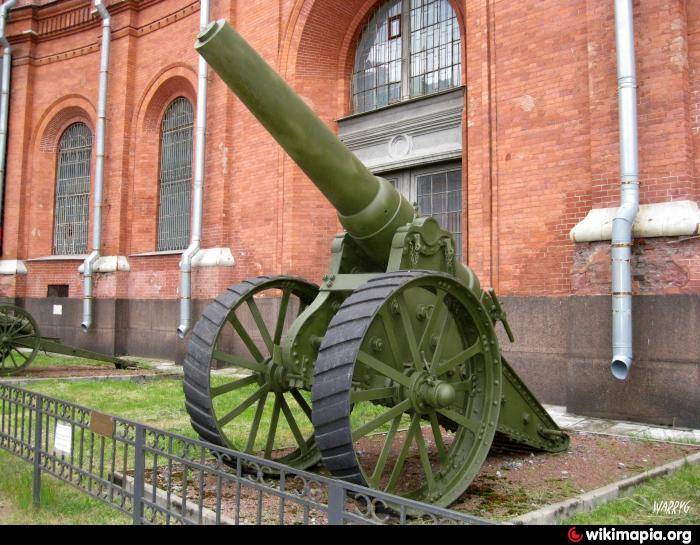
In parallel, at the Perm (Motovilikhinsky) plant, they began to develop a field version of this howitzer. The fortress system was heavy. Such a system was created in 1910 year. 6-inch field howitzer Schneider system arr. 1910, although it was unified with a fortress howitzer on the front end and ammunition, was otherwise rather an independent tool. And the ballistics of the fortress howitzer lagged behind the field "daughter."
And again it is necessary to move a little away from the topic. Two plants could not provide the necessary number of such howitzers for the needs of the army. And the tsarist government decided the problem traditionally. Purchased the missing weapons in the Entente. Thus, another howitzer-6-inch Vickers howitzer appeared in our army.
Howitzer model 1910, the army did not take root. Therefore, the release of it was stopped, and since 20-ies, the Perm plant began producing tools of the 1909 model of the year.
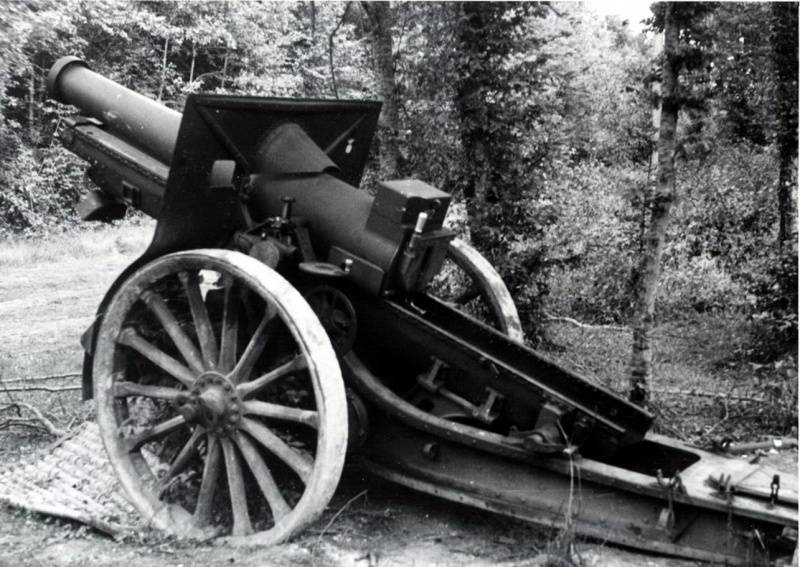
What caused the need to upgrade howitzers in 20-30's? Here again the analogy with the 122-mm howitzer sample arises. 1910 of the year. The army demanded new systems. Mobile, long-range ...
The Soviet government did much to create such systems. However, understanding that to provide a sufficient number of systems in conditions of industrial collapse and post-war devastation is unrealistic, it was decided to follow a proven path. Strengthen ammunition.
As a result, in 1930, an artillery research institute (ANII) was assigned to develop long-range projectiles, including a six-inch caliber, and the design bureau of the Motovilikhinsky (Perm) plant dealt with the adaptation of the 152-mm howitzer mod. 1909 g. Under this ammunition and increase its initial speed.
At that time, the design bureau of the enterprise was headed by V. N. Sidorenko, with his active participation, a number of technical solutions were proposed to increase the range of existing tools.
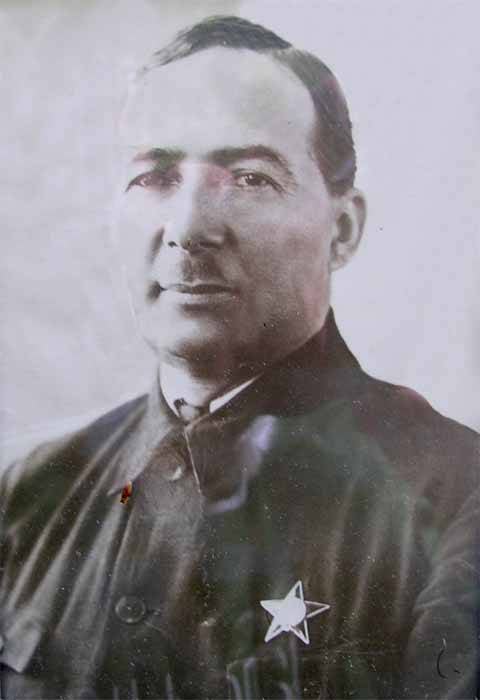
According to the St. Petersburg Military History Museum of Artillery, Engineers and Communications, the project to improve the former 6-inch fortress howitzer was carried out by engineer Yakovlev.
New high-explosive frag grenade demanded new solutions. The fact is that when firing at full and first charges in the barrel detonation occurred. The volume of the chamber was clearly not enough. The problem was solved in the same way as before on the 122-mm howitzer. By boring the chamber to 340 mm. At the same time, the appearance of the trunk has not changed. Therefore, the upgraded cannon was marked on the breech cut and barrel casing from above with the inscriptions “Extended chamber”.
To adapt the recoil devices to the increased recoil, a new moderator was introduced in the rollback brake, and the improvement of the carriage in 1930 was limited to the rule of a different device, without a screw. Also updated sights: the system received a "normalized" sight arr. 1930 with a cylindrical distance drum and a new cutting scales.
And one more innovation: to enhance the chassis, the wooden wheels were replaced with wheel sets from the GAZ-AA truck.
It was in this form that the howitzer was put into service under the name 152-mm howitzer of the 1909 / 30 type.
TTH system:
Caliber, mm: 152,4
Weight, kg, combat: 2725
in the stowed position: 3050
Length (on the march), mm: 6785 (5785)
Width, mm: 1525
Height, mm: 1880 (1920)
Sighting range, m: 9850
Projectile weight, kg: 40-41,25
Initial velocity of the projectile, m / s: 391
Transfer time from traveling
in combat, min: 1-1,5
Number of horses in transit
(with horse traction), pcs: 8
Transportation speed, km / h: 6-8
Calculation persons: 8
Due to a single developer and a close in time creation of 152-mm howitzer arr. 1909 / 30 It was very similar in device to the 122-mm howitzer arr. 1910 / 30 Indeed, the authors have repeatedly met this point of view among museum visitors.
Indeed, both guns can be viewed as a whole as scaled versions of each other, but in some particulars, French engineers applied unique design solutions for each system. These solutions are preserved in the modernized version of the guns.
Gunners who served in the units where these howitzers were operated recall the system with pride and respect. Yes, and they themselves are more suitable for grenadier units than for artillery. Strengths! Why did this system require just such soldiers?
The first thing that comes to mind is the mass of the projectile itself. 40 with more than one kilogram and at a good pace is not for everyone. But as it turned out, this is not the point. The main thing in the design howitzers. In the features of its operation.
Many people noticed in the footage of the newsreel that when fired, soldiers fled from the gun behind the shell boxes, and sometimes even hid in dugouts. Yes, and the shot itself is carried out using a rather long cord.
The fact is that single-lumber carriage on soft ground does not hold a howitzer in place. The gun rolls back a meter or two. The opener "buries" in the ground only then fixes the position of the system.
And then you need physical strength! Shot. The opener "dug" stronger. Vertical guidance is needed. Next shot. The same story. In the end, the coulter "closes up" so that it cannot draw out its calculation. And the wheels too. And it will not be through 10-20 shots, but through 2-5. Therefore, the soldiers also “rolled” the completely not lightweight howitzer forward after a couple of shots.
But that's not all. It is also necessary to dig up the ground on the side of the opener. To ensure coarse guidance. And carry the carriage of the entire "brigade." Are the prospects good for calculating? But these actions are done almost after every shot!
And howitzers great ... galloping! With small angles of vertical guidance gun jumped when fired at 10-20, see!
By the way, now everyone, probably, it became clear why the transition to the carriages with sliding beds is not a whim of designers, but a necessity.
But back to the dugouts, where the soldiers hid during the shot. For this, it is necessary to study the order of the People's Commissar of Defense No. 39 from 1936 of the year. In case of shooting practice with single and volley shots, the calculation must be covered in dugouts or ditches. To pull the trigger, you must use long cords.
And now the fun part! In the event of a premature rupture of the projectile in the barrel, you must fill out a special questionnaire (on the form) and immediately report the incident to the Commissariat of Defense!
Given that there was no such order on other systems, it can be concluded that such a problem existed. True "guilty" is difficult to find. Perhaps the design could not stand. Or maybe the grenades themselves were not finalized.
The baptism of 152-mm howitzers rev.1909 / 30 was taken on Lake Hassan in the summer of 1938. In a number of units and formations in service there were precisely these weapons. In the 40 and 32 of the infantry divisions, for example. Despite the problems with ammunition, the system played an important role in the defeat of the Japanese troops.
A year later, 152-mm howitzers participated in the battles at Khalkhin Gol. Moreover, quite a lot of barrels participated, judging by the data of the People's Commissariat of Defense on the use of ammunition. Howitzers not only helped destroy Japanese engineering structures and fortifications, but also successfully suppressed the enemy’s artillery batteries. During the conflict, all 6 howitzers were disabled. All of them were subsequently restored.
The Finnish-Soviet war also could not do without these systems. In the Soviet units and compounds were more than 500 guns.
The greatest effectiveness of 152-mm howitzers showed when opening the Mannerheim line. Bunkers destroyed two or four shots. And when detecting pillboxes, when a thick layer of concrete could not be broken through with an 152-mm projectile, the target was transferred to 203-mm implements.
Alas, but this war brought the first irretrievable loss of systems. Moreover, the Finns seized several guns and later used them in their own army.
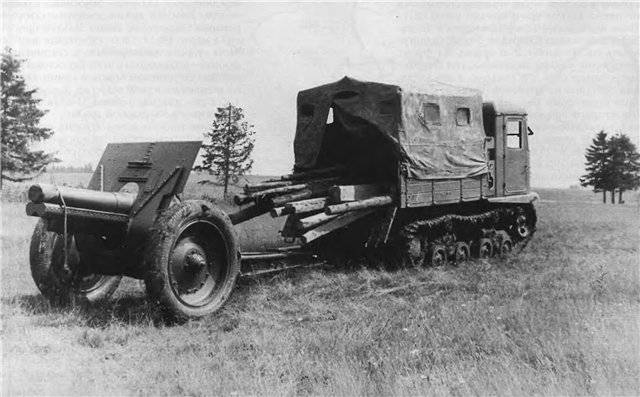
At the beginning of World War II 152-mm howitzers arr. 1909 / 30 were the most common in the Red Army systems of this caliber and class - there were 2611 units.
For comparison: the number of available 152-mm howitzers arr. 1910 / 37 was 99 guns, 152-mm howitzers arr. 1931 g. (NG) - 53, 152-mm Vickers howitzers - 92, and new M-10 - 1058 units. In the western military districts were 1162 howitzers arr. 1909 / 30 and 773 M-10.
In 1941, Soviet 152-mm howitzers suffered heavy losses - 2583 units, which is about two-thirds of the number of their gun fleet before the start of the war. In the future, due to the fact that the guns of this type were not produced, the number of systems of the 1909 / 30 sample only decreased.
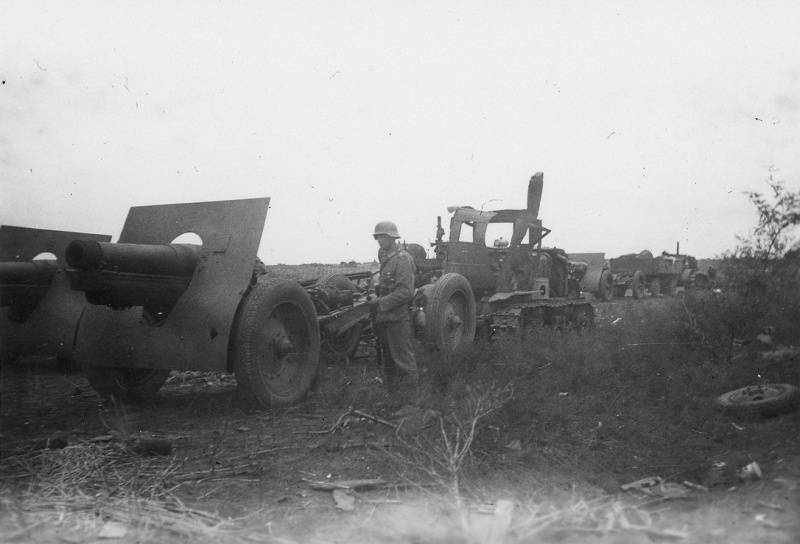
However, the final stage of the war unexpectedly made these howitzers popular. Paradox? 1945 year and ... increase the use of obsolete systems? And the answer lies in the changed tactics of the Soviet troops.
The army was advancing. But, the closer we came to Berlin, the more and more often we ran across serious German engineering structures. With this coped new howitzers. But in the battles in urban areas heavy weapons could not be attached to the assault groups.
And the good old howitzer of the 1909 / 30 model was easily rolled by hand by the group. Her power was enough to suppress and even destroy the enemy firing points in the houses. The gun in these cases fired from a minimum distance. Almost direct fire.
The combat path of the 152-mm howitzer rev. 1909 / 30 g ended up like a real soldier, in the Far East. Japanese guns began combat biography, the Japanese and finished. Finally, the guns were removed from service in the 1946 year.
The paradox of our time. The system that deservedly bears the title of the most numerous system of the Red Army (more only D-1 was released, and even then, taking into account the post-war release) was almost not preserved until our time. Honored veteran who is hard to see ...
- Alexander Staver, Roman Skomorokhov
- Artillery. Large caliber. 122 mm A-19 cannon
Artillery. Large caliber. 122-mm howitzer M-30 model 1938 of the year
Artillery. Large caliber. 122 mm howitzer sample 1910 / 30's. "Outdated" war hero
Artillery. Large caliber. 152-mm gun Br-2
Artillery. Large caliber. 114,3 mm detective
Artillery. Large caliber. How comes the god of war
Artillery. Large caliber. Start
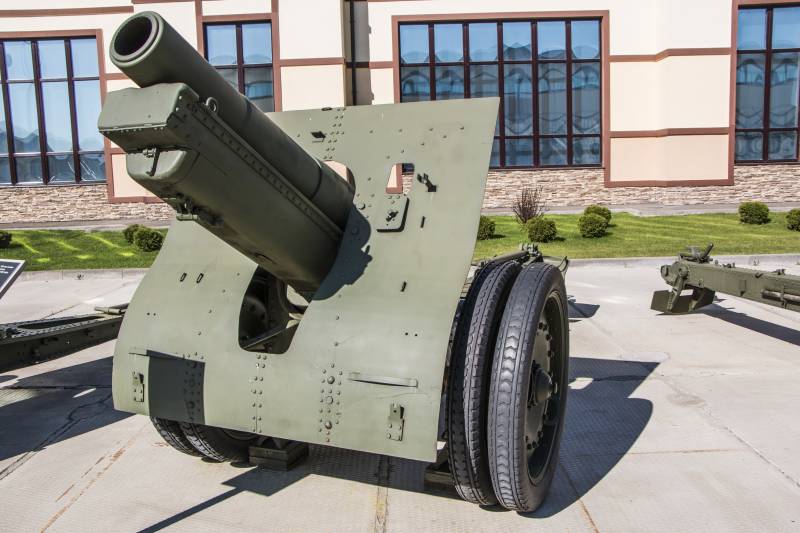
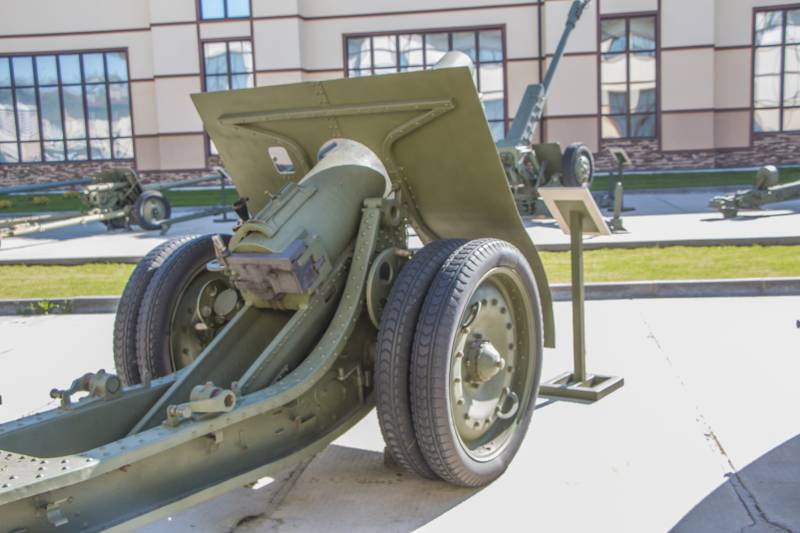
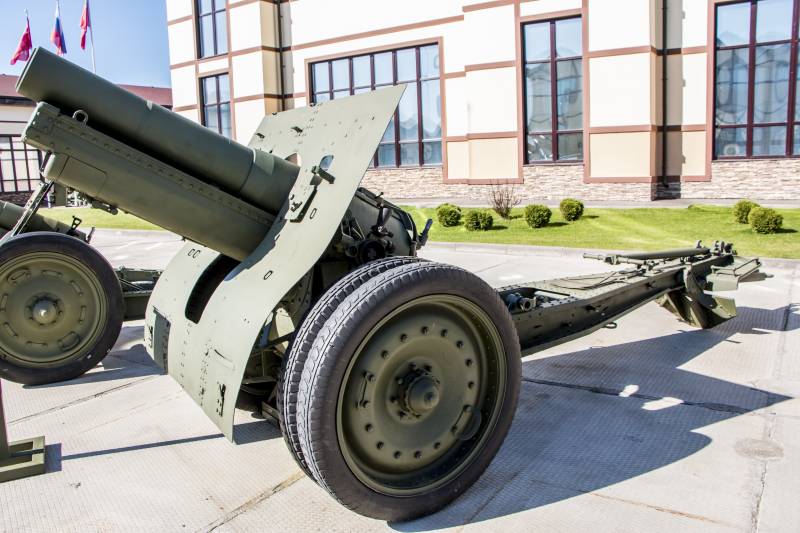
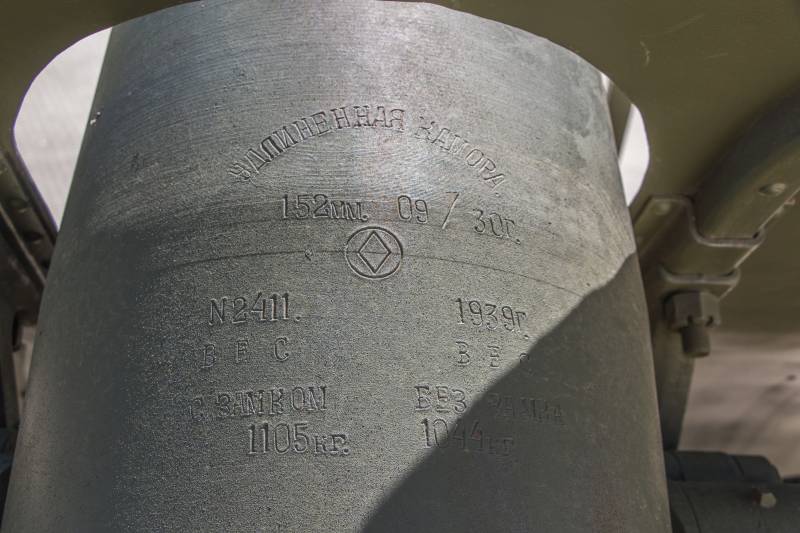
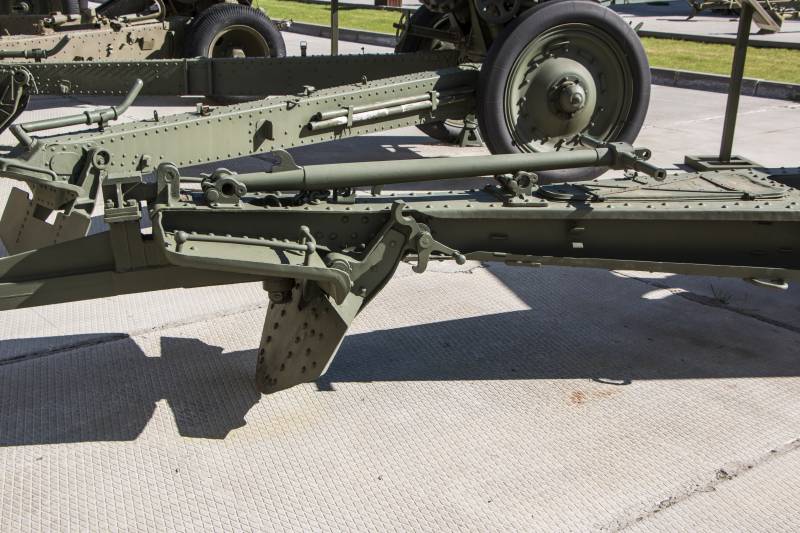
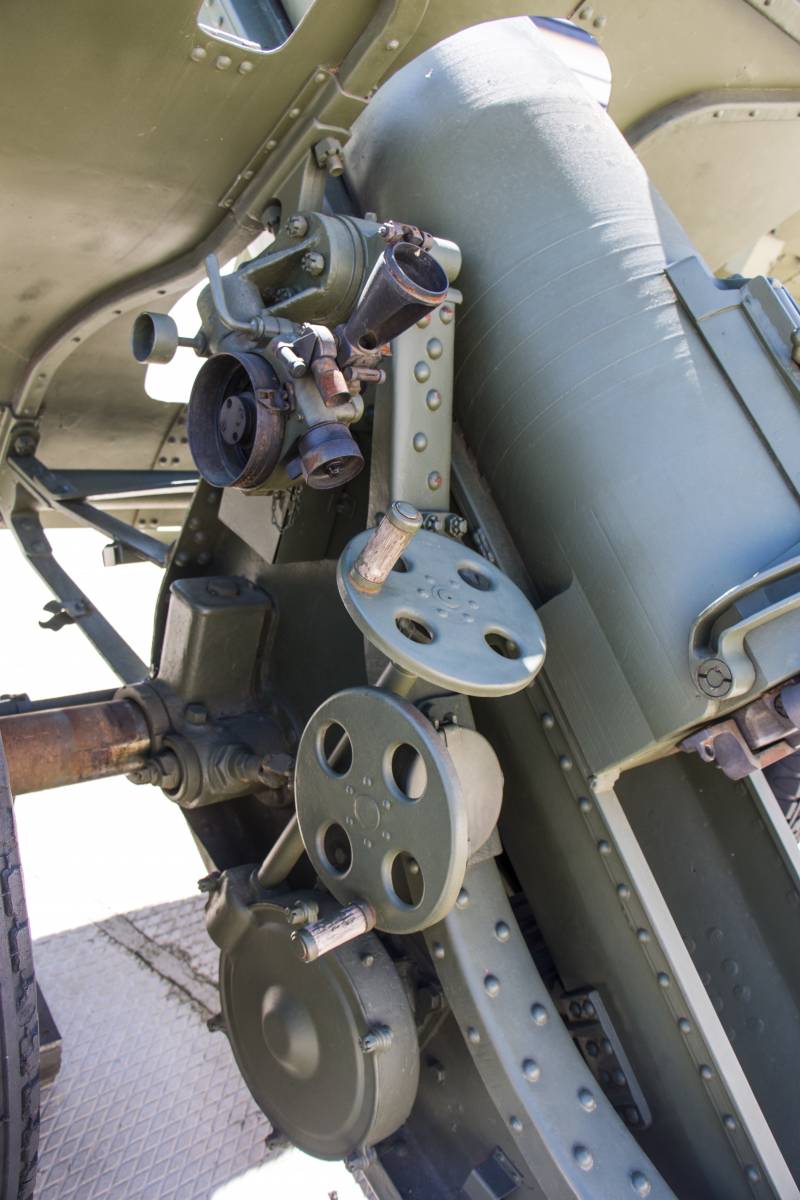
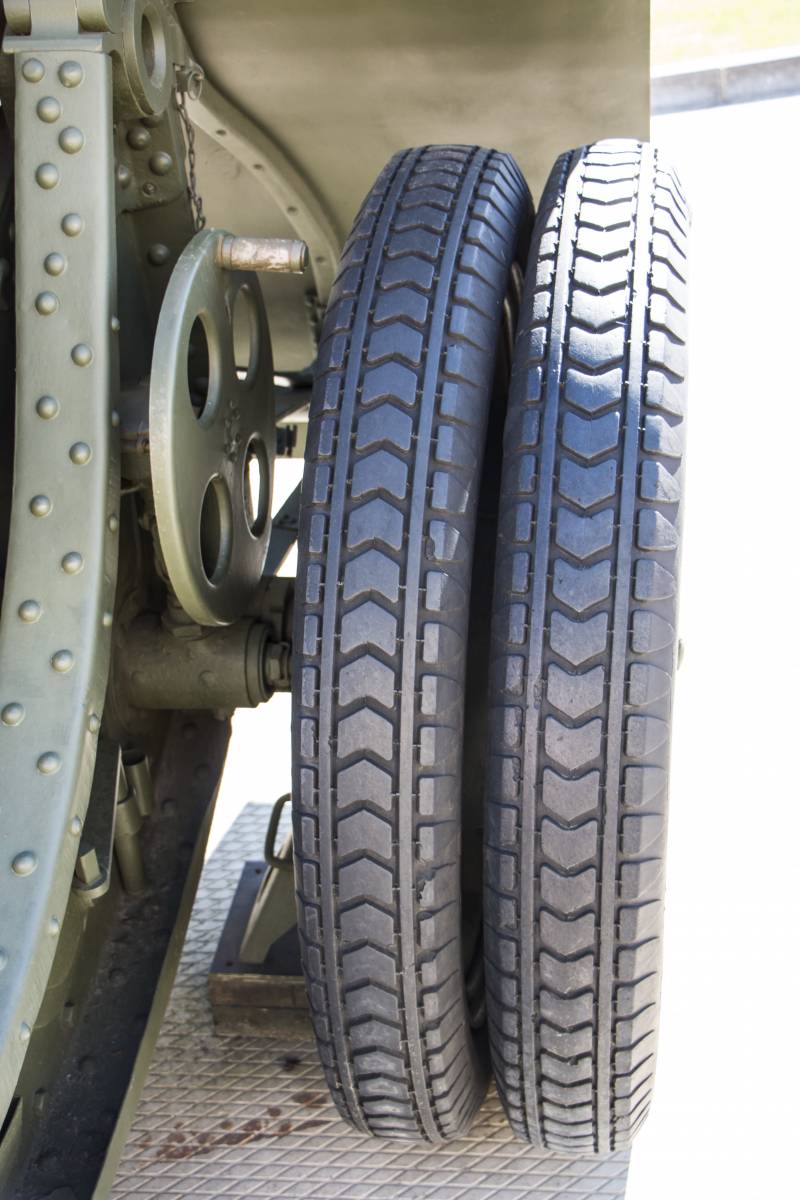
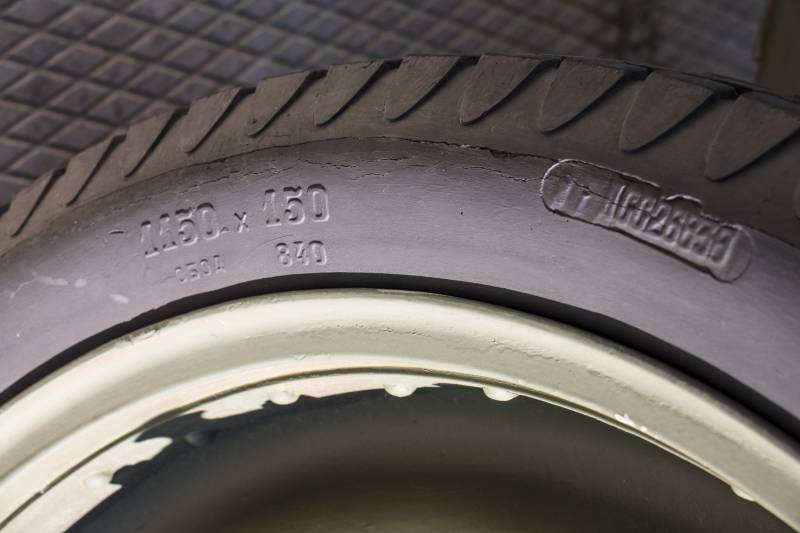
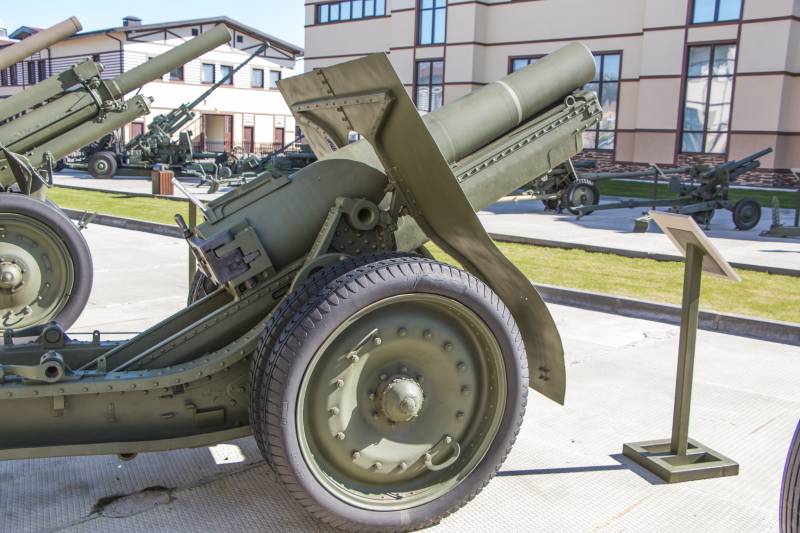
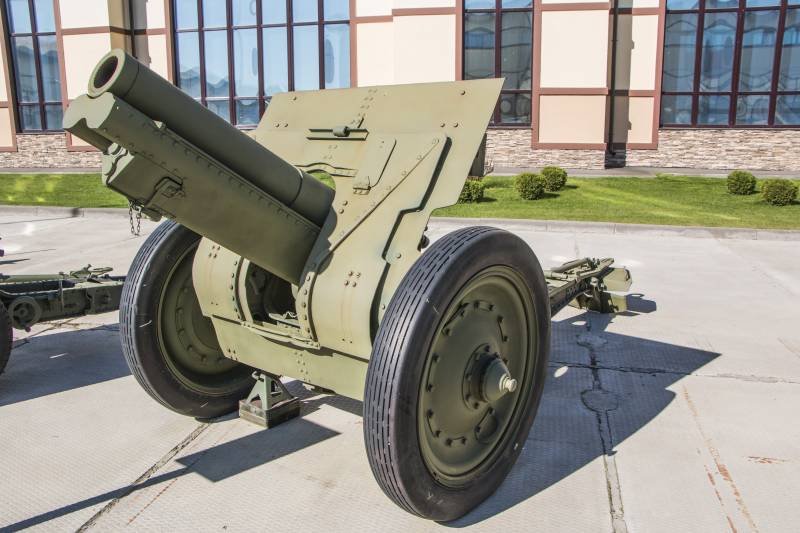
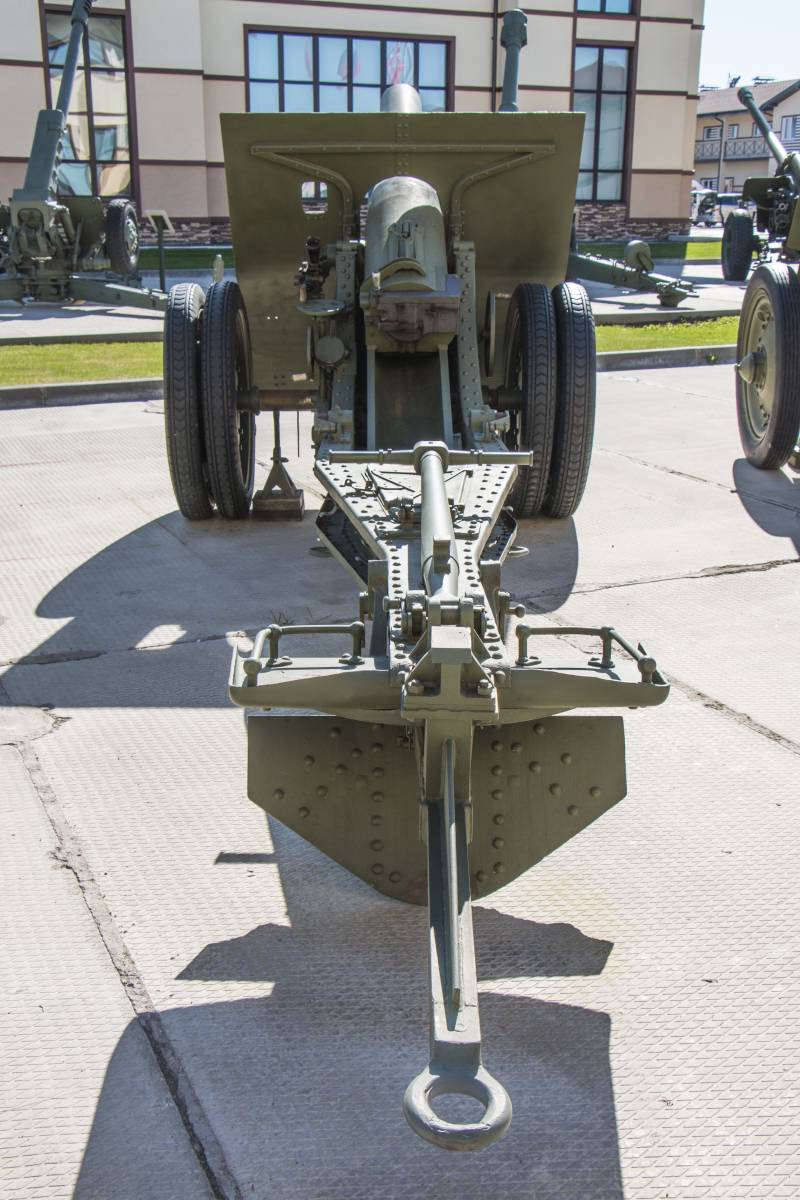
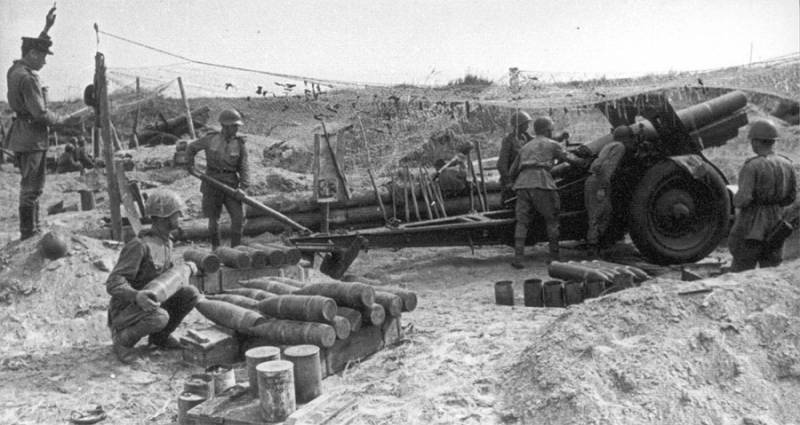
Information